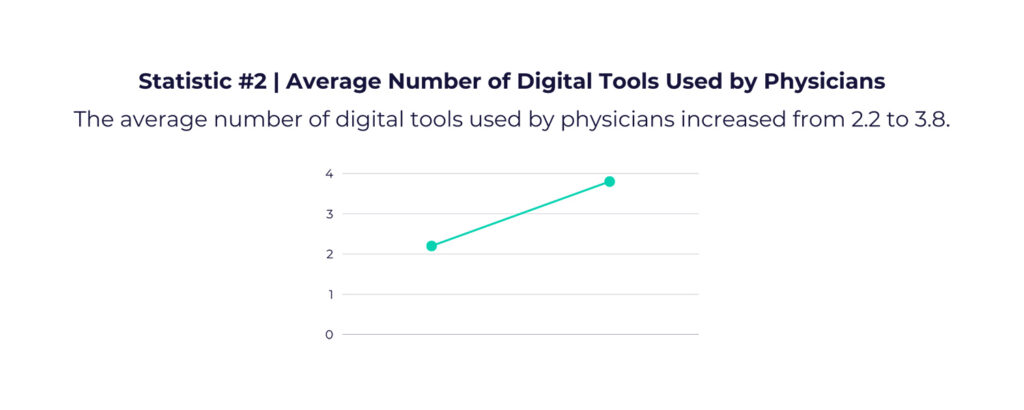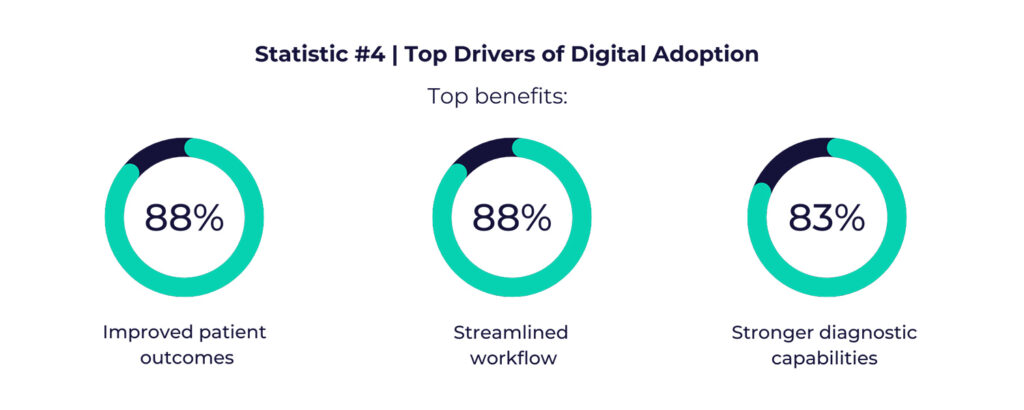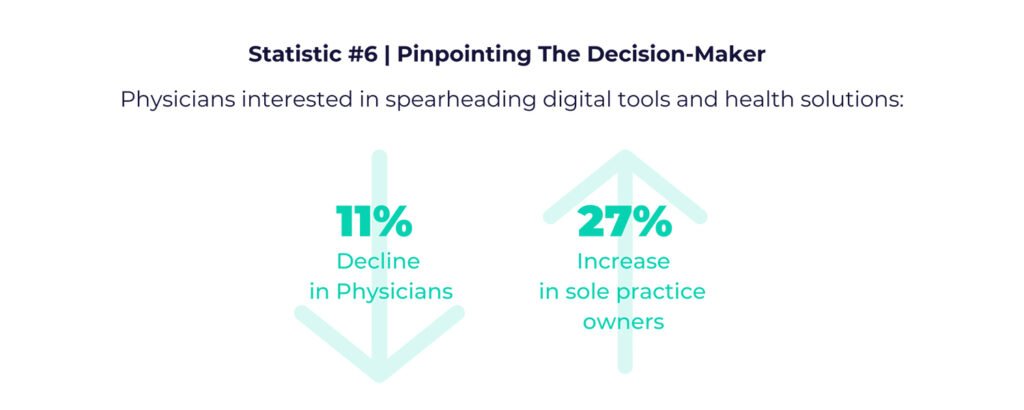Physicians are increasingly recognizing the advantages of using digital tools and technology to support patient healthcare. A recent digital health report by the American Medical Association spotlights shifting physician attitudes toward digital health solutions over the past six years. For medtech companies and those marketing to physicians, this research provides new insights and opportunities for strategic initiative and audience development tactics.
Here are six notable statistics from the study that can guide medtech companies and physician marketers in their marketing efforts:

Statistic #1 | Closing the Gap Between Digital Tools and Patient Care
From 2016 to 2022, both primary care providers (PCPs) and physician specialists in all age groups grew in affinity for digital health solutions – a continual increase from 85% to 93%. Medtech companies employing digital outreach strategies to reach their target decision-makers can leverage this trend to increase digital literacy and enhance engagement with online messaging and marketing efforts.

Statistic #2 | An Inside Look Into Digital Utilization
Among the 1,300 physicians surveyed, the average number of digital tools increased from 2.2 to 3.8. This figure remained consistent across age groups, gender, and years of practice. Furthermore, those who were particularly enthusiastic about adopting technology used an average of 4.2 digital tools for their practice operations. These statistics highlight that physicians are increasingly moving towards digital solutions in their practices, and it can be safely assumed that this pattern extends beyond professional settings.

Statistic #3 | Characterizing the Digital User
The physician groups with the highest interest in digital tools include practices that are mid-to-large-sized, partially owned, in a multi-specialty setting, and those offering primary care services. Medtech companies who can activate their physician marketing strategy now have the opportunity to capitalize on this current interest with these audience segments.

Statistic #4 | Top Drivers of Digital Adoption
The three most persuasive benefits of digital health solutions include:
- Improved patient outcomes (88%)
- Streamlined workflow (88%)
- Stronger diagnostic capabilities (83%)
Knowing the value propositions that resonate with each audience can help marketing teams focus on associated pain points and offer powerful solutions to address them.

Statistic #5 | Roadblocks to Digital Engagement
In addition to identifying what your audience does want in their ideal health solution, an equally important strategy is understanding what your audience doesn’t want. The three highest-ranking red flags in digital tools include:
- Tools that do not improve the standard of care (80%)
- Additional training requirements (78%)
- Any device presented without peer-reviewed research confirmation (73%)
These key elements will be hurdles if they are not cleared before employing your medtech go-to-market strategy.

Statistic #6 | Pinpointing The Decision-Maker
Despite growing interest in digital tools and health solutions, physicians prefer the passenger seat in the decision-making process. Overall, there was an 11% decline in physicians interested in spearheading these initiatives – most would rather be consulted or simply informed. Historically, physicians took the wheel for these decisions – now, the best audience may be other leaders in the same practice. However, sole practice owners remain the most invested in this process, with 27% more interest than partial owners. Physician marketers must carefully consider how this information impacts targeting efforts and suggest strategy shifts.
These are just some of the insights provided from this study. Meanwhile, the team of marketing experts at Jairus specializes in being on the leading edge of medtech market research and go-to-market strategy like this as we provide successful outcomes for our clients every day. We’d be pleased to meet with you to discuss how we can partner with you to elevate your medtech marketing efforts. Let’s talk.
Sources
AMA Digital Health Research. (September 2022). American Medical Association. https://www.ama-assn.org/system/files/ama-digital-health-study.pdf M[/et_pb_text][/et_pb_column][/et_pb_row][/et_pb_section]


